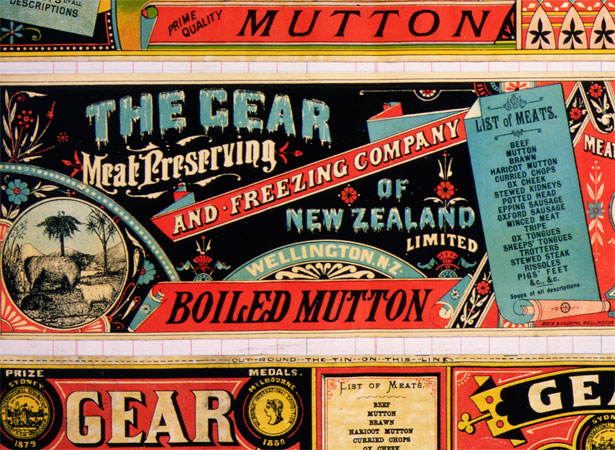
New Zealand’s first successful shipment of frozen meat to Britain in 1882 had a huge impact on the colony, paving the way for the trade in frozen meat and dairy products that became the cornerstone of New Zealand’s 20th-century economy.
The Dunedin’s voyage was organised by William Soltau Davidson, the British-based general manager of the New Zealand and Australian Land Company, whose landholdings in the two countries exceeded 1 million hectares. The entrepreneurial Davidson had taken a keen interest in experiments from 1876, which had proved the concept, if not yet the economic viability, of shipping frozen meat around the globe.
Davidson decided to fit out a passenger sailing ship, the Albion Line’s Dunedin, with a coal-powered Bell Coleman freezing plant, which cooled the entire hold to 22 degrees celsius below the outside temperature. Company employee Thomas Brydone was sent to Britain to study refrigeration technology and then handled the experiment in New Zealand.
Most of the first cargo originated from Brydone’s slaughterhouse at Totara Estate, near Ōamaru. Cooled on site and then sent by rail to Port Chalmers, the mutton and lamb carcasses were frozen aboard the Dunedin. Despite mechanical problems, the plant froze nearly 10,000 carcasses in two months.
About 5000 carcasses were on board the Dunedin when it sailed on 15 February. When the vessel became becalmed in the tropics, crew noticed that the cold air in the hold was not circulating properly. To save his historic cargo, Captain John Whitson crawled inside and sawed extra air holes, almost freezing to death in the process. Crew members managed to pull him out by a rope and resuscitated him. When the Dunedin arrived in London in late May, only one carcass had to be condemned and the cargo’s superiority over Australian shipments was remarked on.
More than a single successful shipment was needed to create a new industry. Davidson set to work creating a marketing and insurance structure to underpin refrigerated shipping. The new technology ultimately enabled the owner-operated (family) farm to become the standard economic unit in rural New Zealand for the next century.
The Dunedin made another nine successful voyages before disappearing in the Southern Ocean in 1890.
Read more on NZHistory
Colonial beachhead – Oamaru HarbourŌamaru, whitestone city - roadside stories – Oamaru HarbourHistory of New Zealand, 1769-1914 – A history of New Zealand 1769-1914
External links
How to cite this page
'First frozen meat shipment leaves New Zealand', URL: https://nzhistory.govt.nz/first-shipment-of-frozen-meat-leaves-nz, (Ministry for Culture and Heritage), updated 26-Jan-2021
